Okay, so I’ll admit, I wasn’t the most excited about Budgies before they joined our collection last year. However, since they arrived in April 2022, I’ve really grown to adore these bubbly little birds.
I love listening to the male’s cheerful little vocalizations, they always seem to be chatting away to each other. More formally known as Budgerigars (Melopsittacus undulatus), these small parakeets are native to Australia. They can be found across most of the continent except for coastal areas in the far east and south-west. They have also been introduced to New Zealand, Puerto Rico, Japan, Africa, Switzerland, and the USA, but the only established introduced population is in southwest Florida.
Budgerigars are the only member of the genus Melopsittacus (from the Ancient Greek meaning “melodious parrot”). They are most closely related to Lorries and Fig Parrots.
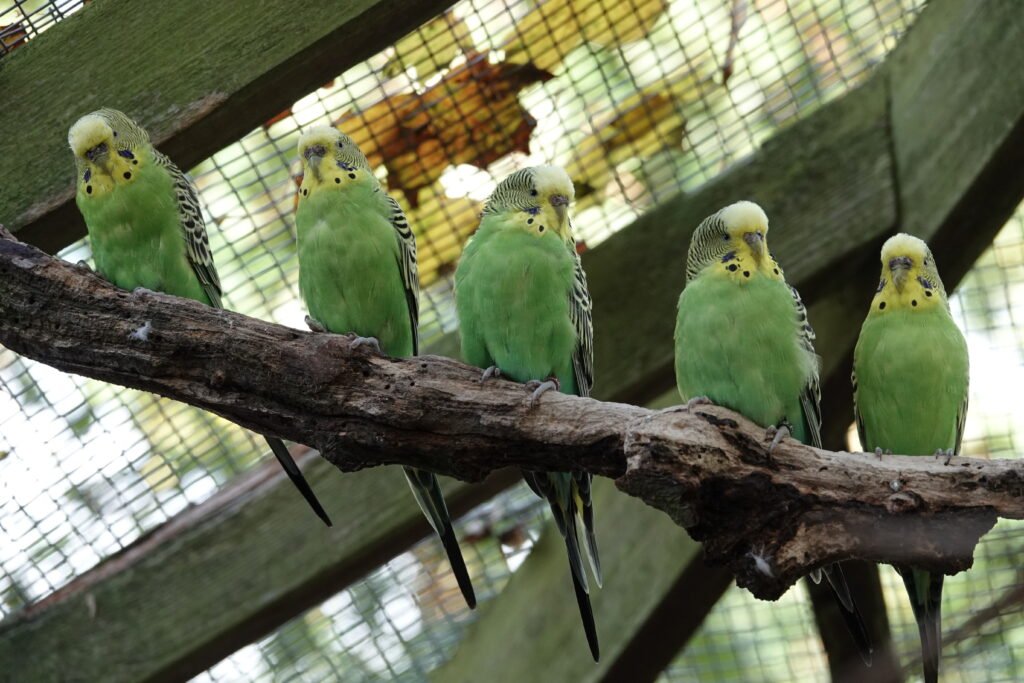
Feeding and habitat
Budgerigars are extremely good at taking advantage of sources of food and water whenever they come across it and are very much a nomadic species because of this lifestyle.
Mainly restricted to the interior of Australia, they are a bird of semi-arid and sub-humid habitats. However, they can also be found in dry grasslands and more coastal habitats, migrating to the north in search of food during the winter. They prefer to feed on the ground on the seeds of grass and crops. The flock needs to make regular stops for water and need to drink around 5.5% of their body weight a day. Because of this, they often position themselves close to water holes.
Their ability for flocks to consume large amounts of seeds is sometimes a concern for farmers, but they face no significant threats in the wild. Plus, exportation of Budgerigars from Australia has been banned since 1894, hence a conservation status of least concern.
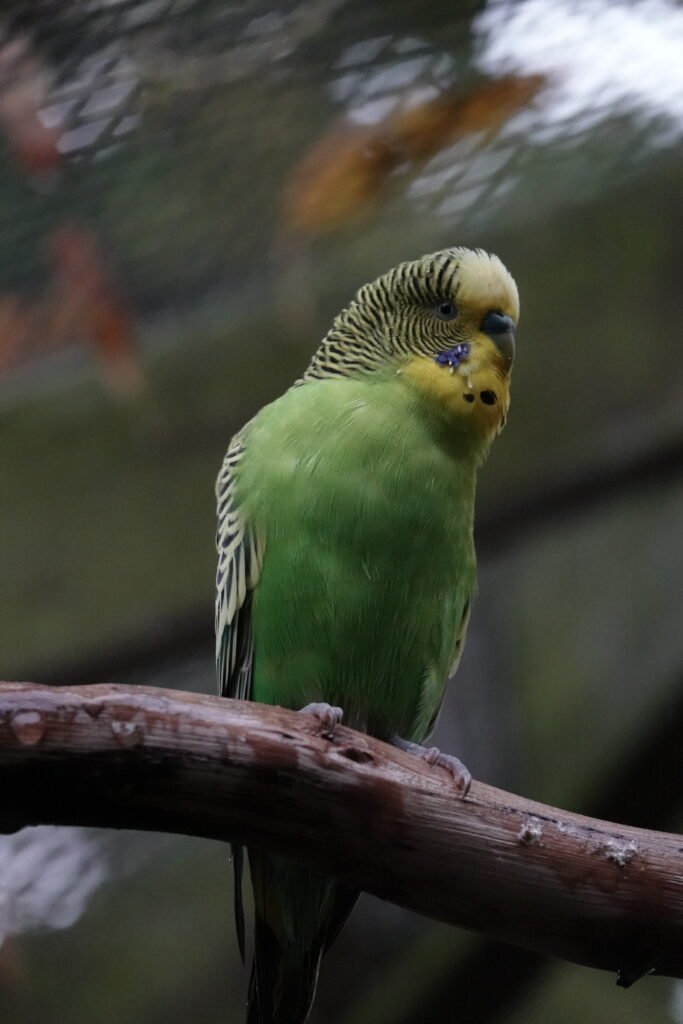
Budgie characteristics
Budgies are very well studied, and with a population of about 5 million birds worldwide we probably know more about their ecology than any other parrot!
You can’t confuse them easily with any other species as their shape and plumage is so distinctive. At the park, our Budgies resemble the Budgerigars you’d find in the wild, with most having a yellow head with black stripes with purple and black spots on their cheeks. The body and wing feathers are a mixture of yellow and green feathers centered with black with the tail ending in a lovely green-blue colour.
Sexual dimorphism
Juveniles are slightly different to adults with more barring on the forehead and there is a subtle sexual dimorphism within the adults. Breeding females have a beige coloured cere (the skin around the beak), whereas the males cere is blue. Like many parrots, the colours of the plumage shine more brightly under UV light with patterns on their cheeks being the most accentuated. This may play a role in mate selection and courtship.
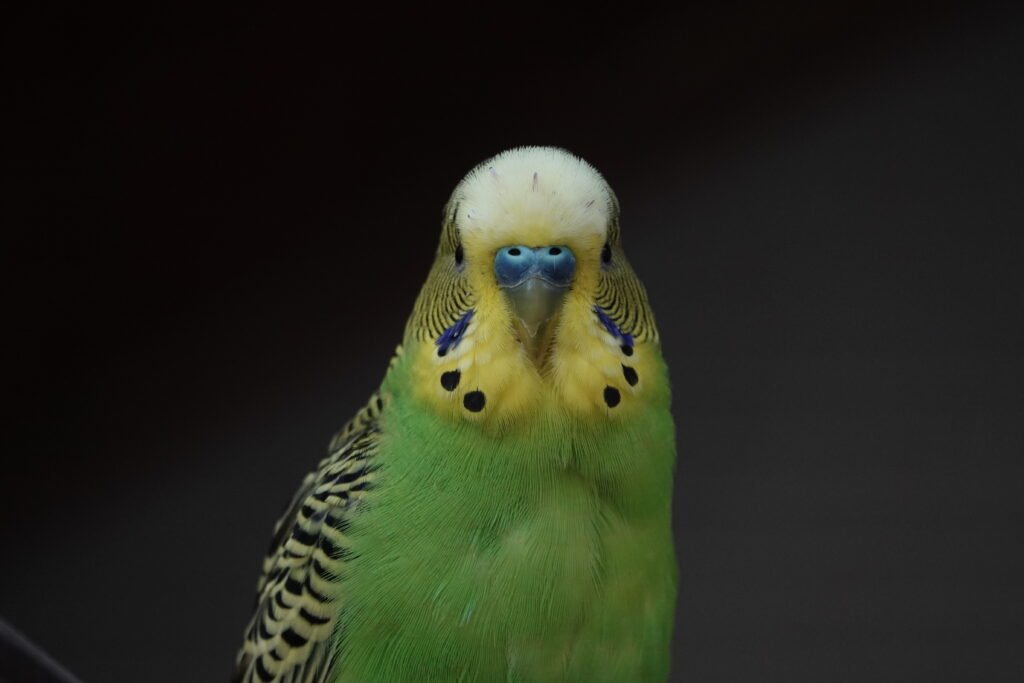
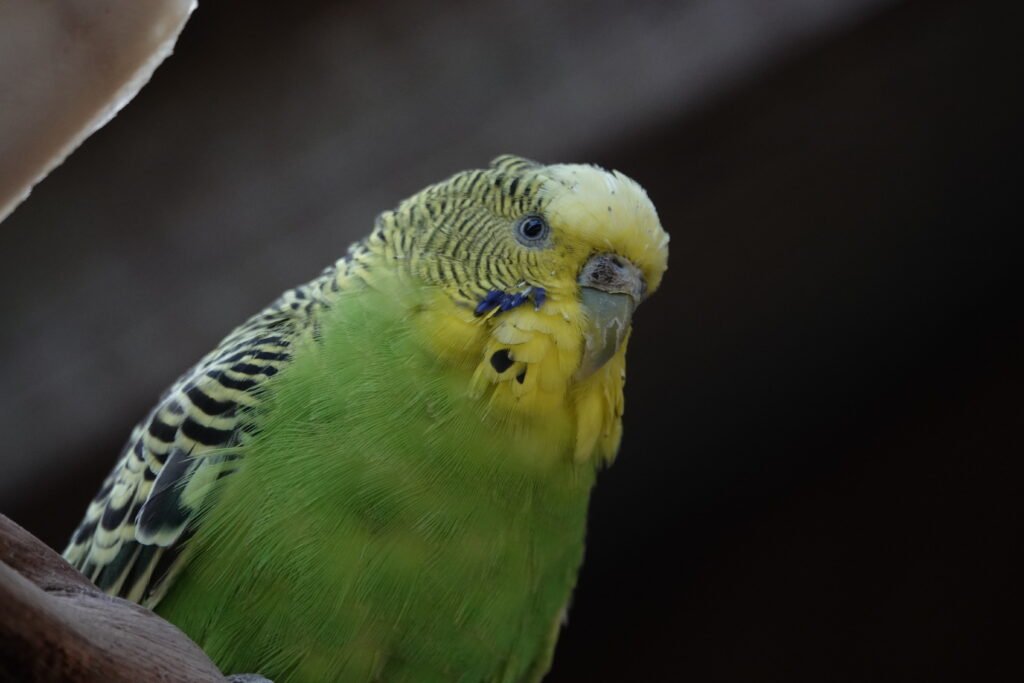
Breeding Budgies
Budgies breed in large colonies throughout their range in the wild and are known to be both monogamous (stay with the same partner) and polygynadrous (breed with more than one partner). With the later breeding strategy, the female can gain more help raising the young. They can breed any time of the year but it is usually timed with an abundance of seeds.
Generally, Budgies are opportunistic breeders, and decent spells of rain will instigate breeding as this causes good grass growth. They lay their eggs in holes wherever they can find them, usually in trees, logs, and fenceposts. In eucalyptus trees they can nest colonially with several nests found on the same tree branch! They line cavities with soft materials such as decayed wood shavings and will usually lay between four to eight eggs.
Females choose the location of the nest and incubate the eggs. They take about 18 days to hatch with each pair able to raise several broods in a row. The chicks are altricial (blind and naked) and open their eyes at around 10 days old. By this time, they will have developed soft down feathers, with their adult-type feathers starting to grow at around three weeks old. It is at this stage that the male will start to help with caring for the chicks if the female allows him to do so. At around five weeks old they will usually leave the nest and are weaned between six and eight weeks old. Being able to breed quickly whilst on the move is a huge advantage for this species.
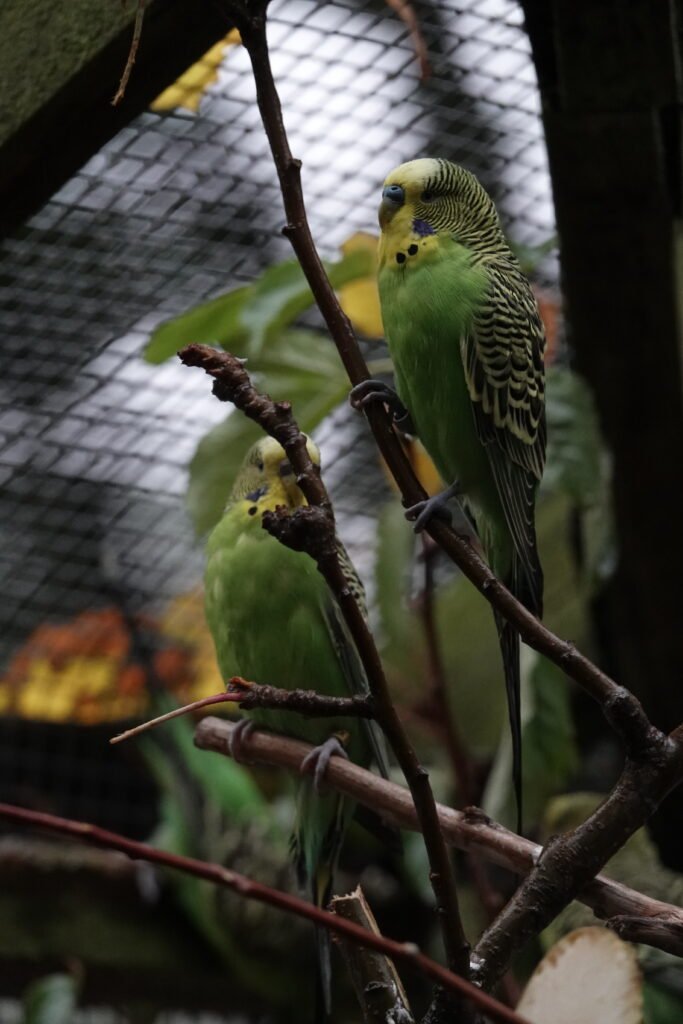
Captive Budgerigars
Budgies have been bred in captivity since the 19th century. Their small size, relatively low cost to keep and ability to mimic sounds means they are still very popular pets today. They have been reported living up to 21 years old. Pus, they are the third most popular pet in the world after domesticated dogs and cats.
Breeders have worked to create a dazzling array of colour mutations. These include individuals with blue, white, yellow, and grey colouration and some even with small crests! Budgies in pet shops also tend to be bigger than their wild counterparts.
Whilst Budgies are popular as pets, they can be a little challenging to house. They are quite messy and will chew anything they can find to keep their bills and nails in good condition. They are also a very intelligent species and require lots of stimulation through enrichment and interaction with other budgerigars or humans.
Enrichment
Our Budgies absolutely love chewing up the leaves and wood of trees such as willow and eucalyptus. Care should be taken when feeding out browse though as some species can be toxic to birds. They also really enjoy taking a shower and love sitting out in the rain on a drizzly day. We make lots of toys for all the parrots on the section. The Budgies’ favourite enrichment item (other than browse) are little paper parcels which they love unwrapping to get to their food inside.
A great form of enrichment for our birds is each other.
They are very much an overlooked species at the park. However, when you spend some time watching our flock of Budgies you start to see their interactions with one another which are just adorable. So, I hope on your next visit you might stop and admire these brilliant little birds.
Source: winghamwildlifepark.co.uk


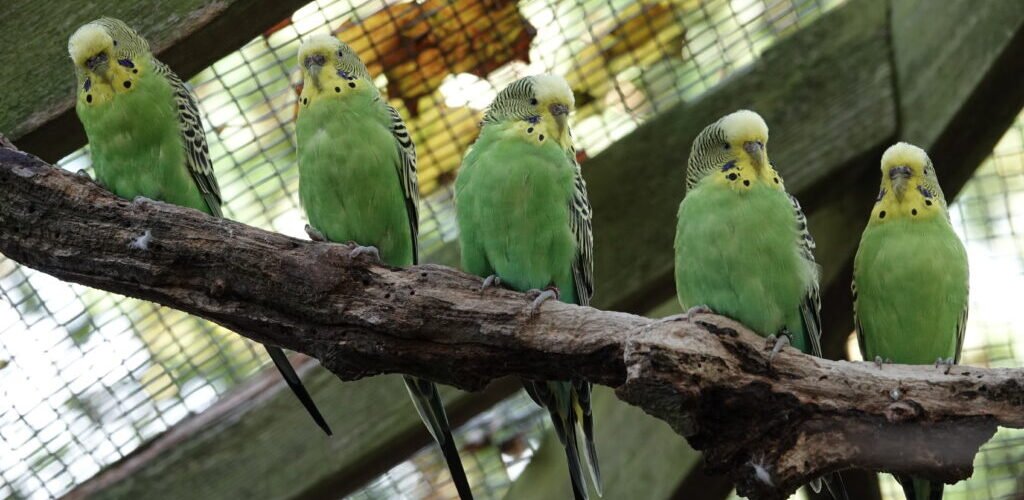


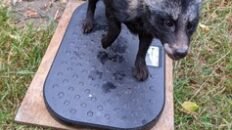

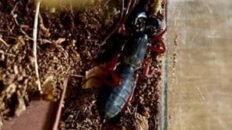
 Please wait...
Please wait...

Add comment